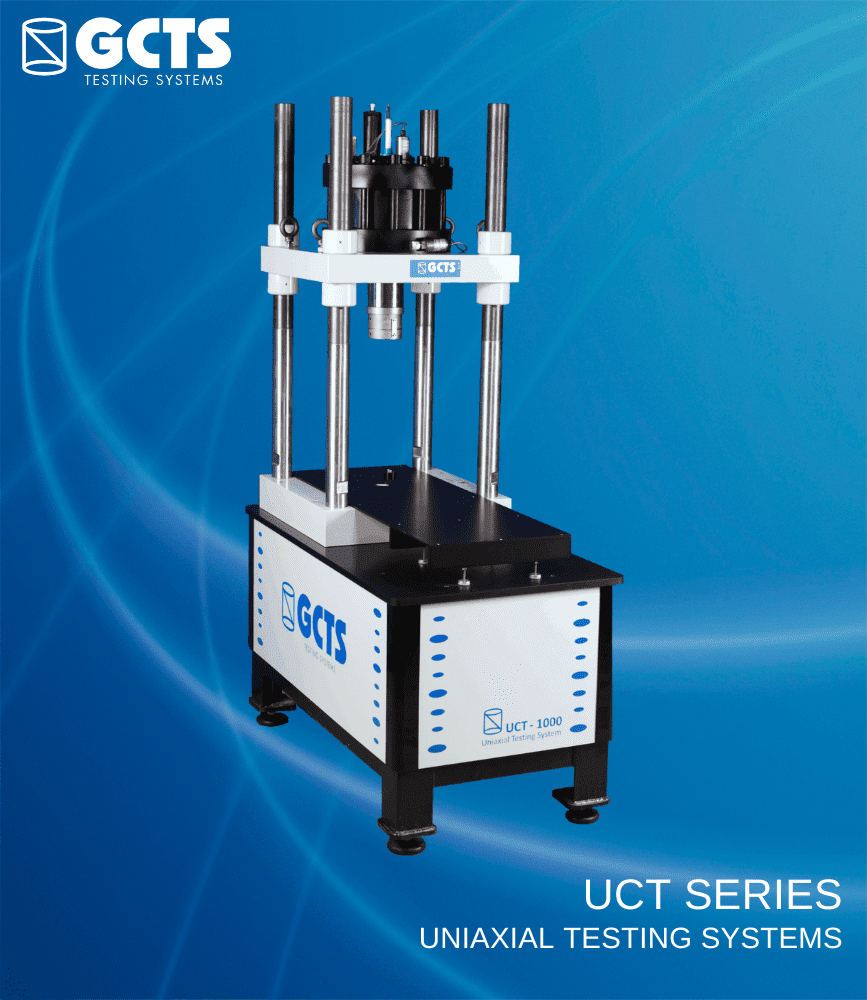Unconfined Compression
The GCTS Unconfined Compression Testing Systems (UCT Series) are easy-to-use systems for the determination of the unconfined compressive strength of cylindrical specimens. The axial actuator is computer-controlled using our state-of-the-art SCON-1400 Wireless Servo Controller and Data Acquisition System and our 64-bit Windows-based software. The system is capable of performing static and dynamic closed-loop tests by controlling the load, deformation, stress, strain or any other measured or calculated parameter. All test measurements can easily be viewed and exported for rapid analysis of results. On-specimen deformation instrumentation, triaxial cells, and other testing instrumentation can be provided to increase the functionality of the system.
GCTS also offers the RMS-101 Rock Mechanics System as an economical, easy-to-use setup for unconfined compression tests. The entire system is housed on a mobile table, which includes the load frame, hydraulic power unit, and servo-control unit. Other loading and measurement fixtures, such as a Brazilian fixture for indirect tension tests and ultrasonic velocity transducers, can be used with this system.
UCT Series
HIGHLIGHTS
- Axial load capacity up to 4,500 kN (1,000 kip)
- Axial stroke up to 200 mm
- Four-column load frame with adjustable crosshead
- Frame stiffness up to 5,000 kN/mm
- Electro-hydraulic, closed-loop digital servo-control of axial load or deformation
- Can perform static or dynamic tests
- Capable of performing bending, indirect tension, direct tension, fracture, creep, and other material tests
- Can be used with a GCTS Triaxial Cell to perform triaxial tests
- Optional on-specimen axial and radial strain measurement system available





